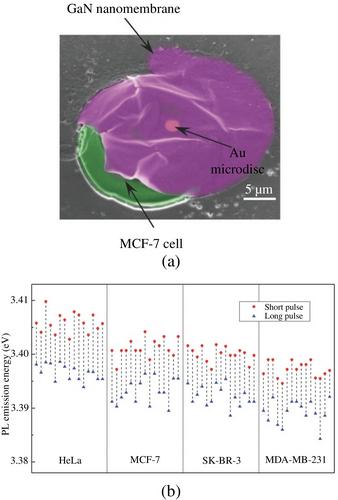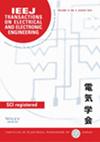下载PDF
{"title":"Cellular Temperature Sensing Techniques Leveraging Advantages of Micro/Nano-Thermometers","authors":"Naoki Inomata","doi":"10.1002/tee.70091","DOIUrl":null,"url":null,"abstract":"<p>Understanding the mechanisms within cells is essential for advancing biophysical research and applications in medicine and materials science. Temperature, in particular, is a crucial physical parameter that governs the behavior of both cells and living organisms. Therefore, investigating cellular mechanisms through temperature monitoring is a rational approach. This review summarizes current methodologies for measuring the temperature of single cells, highlighting their principles, advantages, and limitations. Thermosensitive nanoparticles, which rely on the temperature dependence of fluorescent properties, enable localized temperature measurements and mapping, providing detailed insights into subcellular thermal behavior. Additionally, microfabricated thermometers, including traditional tools such as thermocouples and thermistors, as well as unique devices like mechanical resonant thermometers and gallium nitride nanomembranes, are highlighted as powerful methods for cellular temperature sensing. This review describes recent advancements in measurement techniques for temperature detection while presenting experimentally obtained cellular thermal properties that depend on the surrounding temperature. By providing an overview of current progress and open challenges, this review lays the foundation for future investigations into cellular thermodynamics, fostering a deeper understanding of the role of temperature and heat in cellular processes. © 2025 Institute of Electrical Engineers of Japan and Wiley Periodicals LLC.</p>","PeriodicalId":13435,"journal":{"name":"IEEJ Transactions on Electrical and Electronic Engineering","volume":"20 9","pages":"1326-1332"},"PeriodicalIF":1.1000,"publicationDate":"2025-07-03","publicationTypes":"Journal Article","fieldsOfStudy":null,"isOpenAccess":false,"openAccessPdf":"https://onlinelibrary.wiley.com/doi/epdf/10.1002/tee.70091","citationCount":"0","resultStr":null,"platform":"Semanticscholar","paperid":null,"PeriodicalName":"IEEJ Transactions on Electrical and Electronic Engineering","FirstCategoryId":"5","ListUrlMain":"https://onlinelibrary.wiley.com/doi/10.1002/tee.70091","RegionNum":4,"RegionCategory":"工程技术","ArticlePicture":[],"TitleCN":null,"AbstractTextCN":null,"PMCID":null,"EPubDate":"","PubModel":"","JCR":"Q4","JCRName":"ENGINEERING, ELECTRICAL & ELECTRONIC","Score":null,"Total":0}
引用次数: 0
引用
批量引用
Abstract
Understanding the mechanisms within cells is essential for advancing biophysical research and applications in medicine and materials science. Temperature, in particular, is a crucial physical parameter that governs the behavior of both cells and living organisms. Therefore, investigating cellular mechanisms through temperature monitoring is a rational approach. This review summarizes current methodologies for measuring the temperature of single cells, highlighting their principles, advantages, and limitations. Thermosensitive nanoparticles, which rely on the temperature dependence of fluorescent properties, enable localized temperature measurements and mapping, providing detailed insights into subcellular thermal behavior. Additionally, microfabricated thermometers, including traditional tools such as thermocouples and thermistors, as well as unique devices like mechanical resonant thermometers and gallium nitride nanomembranes, are highlighted as powerful methods for cellular temperature sensing. This review describes recent advancements in measurement techniques for temperature detection while presenting experimentally obtained cellular thermal properties that depend on the surrounding temperature. By providing an overview of current progress and open challenges, this review lays the foundation for future investigations into cellular thermodynamics, fostering a deeper understanding of the role of temperature and heat in cellular processes. © 2025 Institute of Electrical Engineers of Japan and Wiley Periodicals LLC.
利用微/纳米温度计优势的细胞温度传感技术
了解细胞内的机制对于推进生物物理研究以及在医学和材料科学中的应用至关重要。尤其是温度,它是控制细胞和生物体行为的关键物理参数。因此,通过温度监测研究细胞机制是一种合理的方法。本文综述了目前测量单细胞温度的方法,重点介绍了它们的原理、优点和局限性。热敏纳米颗粒依赖于荧光特性的温度依赖性,能够进行局部温度测量和绘图,提供亚细胞热行为的详细见解。此外,微制造温度计,包括传统的工具,如热电偶和热敏电阻,以及独特的设备,如机械谐振温度计和氮化镓纳米膜,被强调为细胞温度传感的强大方法。这篇综述描述了温度检测测量技术的最新进展,同时展示了实验获得的依赖于周围温度的细胞热特性。通过概述当前的进展和开放的挑战,本综述为细胞热力学的未来研究奠定了基础,促进了对温度和热量在细胞过程中的作用的更深层次的理解。©2025日本电气工程师协会和Wiley期刊有限责任公司。
本文章由计算机程序翻译,如有差异,请以英文原文为准。


 求助内容:
求助内容: 应助结果提醒方式:
应助结果提醒方式:


